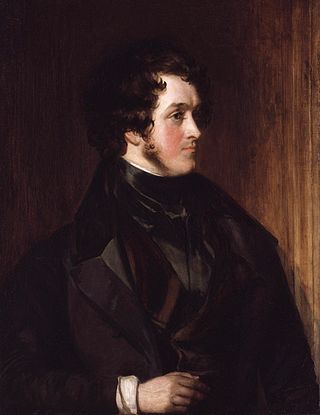
William Harrison Ainsworth was an English historical novelist born at King Street in Manchester. He trained as a lawyer, but the legal profession held no attraction for him. While completing his legal studies in London he met the publisher John Ebers, at that time manager of the King's Theatre, Haymarket. Ebers introduced Ainsworth to literary and dramatic circles, and to his daughter, who became Ainsworth's wife.
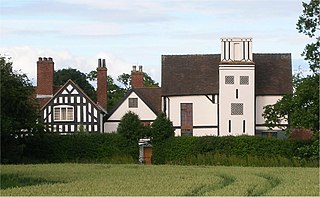
Boscobel is a civil parish in the east of Shropshire, England, on the border with Staffordshire. To the north is the Staffordshire village of Bishops Wood.

This is a list of works by the English historical novelist William Harrison Ainsworth (1805–1882).
Artist and the Author is a pamphlet written by George Cruikshank in 1872. During the late 1860s, Cruikshank claimed to be the author of works attributed to other writers, including Charles Dickens and William Harrison Ainsworth. After John Forster contradicted Cruikshank's claims to having "originated" Oliver Twist, Cruikshank began a dispute in The Times as being the creator of novels attributed to Ainsworth. After the newspaper stopped carrying the dispute, Cruikshank produced all of his claims in Artist and the Author, where he disputed his relationship to 8 of Ainsworth's novels.

Windsor Castle is a novel by William Harrison Ainsworth serially published in 1842. It is a historical romance with gothic elements that depicts Henry VIII's pursuit of Anne Boleyn. Intertwined with the story are the actions of Herne the Hunter, a legendary ghost that haunts Windsor woods.
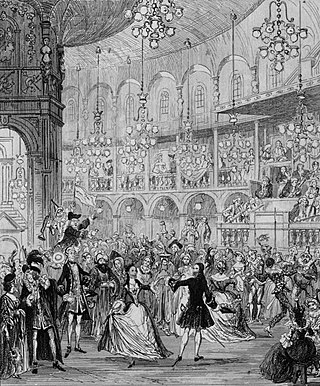
The Miser's Daughter is a novel by William Harrison Ainsworth serially published in 1842. It is a historical romance that describes a young man pursuing the daughter of a miserly rich man during the 18th century.

Jack Sheppard is a novel by William Harrison Ainsworth serially published in Bentley's Miscellany from 1839 to 1840, with illustrations by George Cruikshank. It is a historical romance and a Newgate novel based on the real life of the 18th-century criminal Jack Sheppard.
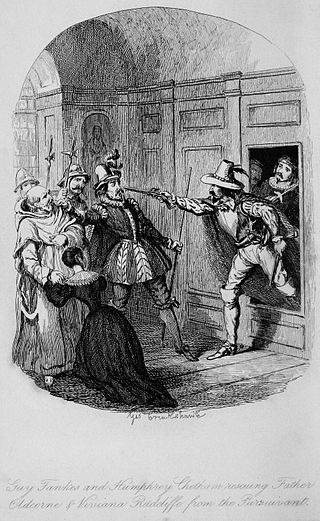
The novel Guy Fawkes first appeared as a serial in Bentley's Miscellany, between January and November 1840. It was subsequently published as a three-volume set in July 1841, with illustrations by George Cruikshank. The first of William Harrison Ainsworth's seven "Lancashire novels", the story is based on the Gunpowder Plot of 1605, an unsuccessful attempt to blow up the Houses of Parliament. Ainsworth relied heavily on historical documents describing the trial and execution of the conspirators, of whom Fawkes was one, but he also embellished the known facts. He invented the character of Viviana Radcliffe, daughter of the prominent Radcliffe family of Ordsall Hall – who becomes Fawkes's wife – and introduced gothic and supernatural elements into the story, such as the ability of the alchemist, John Dee, to raise the spirits of the dead.
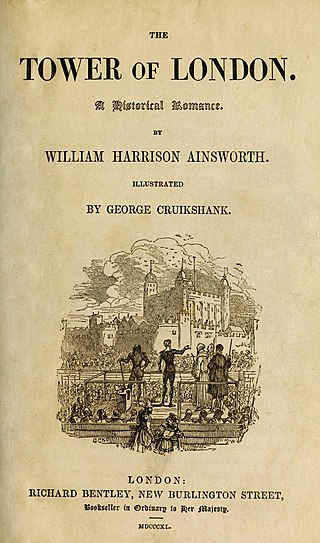
The Tower of London is a novel by William Harrison Ainsworth serially published in 1840. It is a historical romance that describes the history of Lady Jane Grey from her short-lived time as Queen of England to her execution.
St. James's is a novel by William Harrison Ainsworth serially published in 1844. It describes the events surrounding the end of Queen Anne's reign and the dispute between the Duke and Duchess of Marlborough with two Tories for influence over the queen.

Old St. Paul's, also titled Old Saint Paul's: A Tale of the Plague and the Fire, is a novel by William Harrison Ainsworth serially published in 1841. It is a historical romance that describes the events of the Great Plague of London and the Great Fire of London. It was the basis for the 1914 silent film Old St. Paul's.

Rookwood is a novel by William Harrison Ainsworth published in 1834. It is a historical and gothic romance that describes a dispute over the legitimate claim for the inheritance of Rookwood Place and the Rookwood family name.

The Flitch of Bacon is an 1854 historical novel by the British writer William Harrison Ainsworth. It was originally serialised in The New Monthly Magazine. He based it on the tradition of the Flitch of Bacon at Little Dunmow in Essex, awarded to the happiest married couple. It inspired a revival of the practice, with Ainsworth judging a competition the following year.

John Law: The Projector is an 1864 historical novel by the British writer William Harrison Ainsworth. It was released in three volumes by the London publishing house Chapman and Hall. It focuses on the early eighteenth century Scottish financier John Law and his efforts to establish the Mississippi Company in Paris which ultimately went bankrupt after a speculative bubble.

Myddleton Pomfret is an 1868 novel by the British writer William Harrison Ainsworth, published in three volumes by Chapman and Hall. It was originally serialised in Bentley's Miscellany between July 1867 and March 1868. This was the last of his novels to feature in the magazine which ceased publication in 1868.

Hilary St. Ives is an 1870 novel in three volumes by the British writer William Harrison Ainsworth. Originally serialised in The New Monthly Magazine during 1869, it was then published in London by Chapman and Hall. Although Ainsworth was best known for his historical novels, this was one of three novels in a row with contemporary settings along with Old Court (1867) and Myddleton Pomfret (1868). Stylistically it borrows from the sensation novels popular at the time. He then returned to his more usual historical settings with Boscobel (1872) which takes place in the mid-seventeenth century.
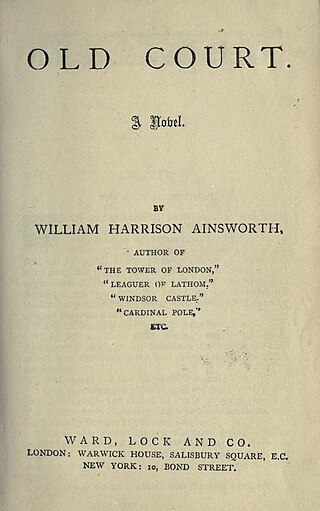
Old Court is an 1867 novel by the British writer William Harrison Ainsworth. It was initially serialised in Bentley's Miscellany before being published in three volumes by Chapman and Hall of London. It was the first of three novels in a row with present-day settings, in contrast to the historical novels for which the author was known for.

The Spanish Match is an 1865 three-volume historical novel by the British writer William Harrison Ainsworth. It was originally serialised in Bentley's Miscellany under the alternative title House of the Seven Chimneys, a reference to the English Embassy in Spain. It was then published in London by Chapman and Hall. It is based on the historic Spanish match, a proposed marriage between the English and Spanish royal families in the 1620s.

Preston Fight is an 1875 historical novel by the British author William Harrison Ainsworth, released in three volumes by the London publishing house Tinsley Brothers. Like his earlier novel The Manchester Rebels, it was set against the backdrop of a Jacobite uprising in this case the 1715 Jacobite rebellion. The main focus of the story is the rising in Northumberland and northern England rather than that in Scotland, although Scottish commander William Mackintosh plays a major role in the plot. It features an apocryphal visit by James Francis Edward Stuart to Northumberland in the period before the rising.
















